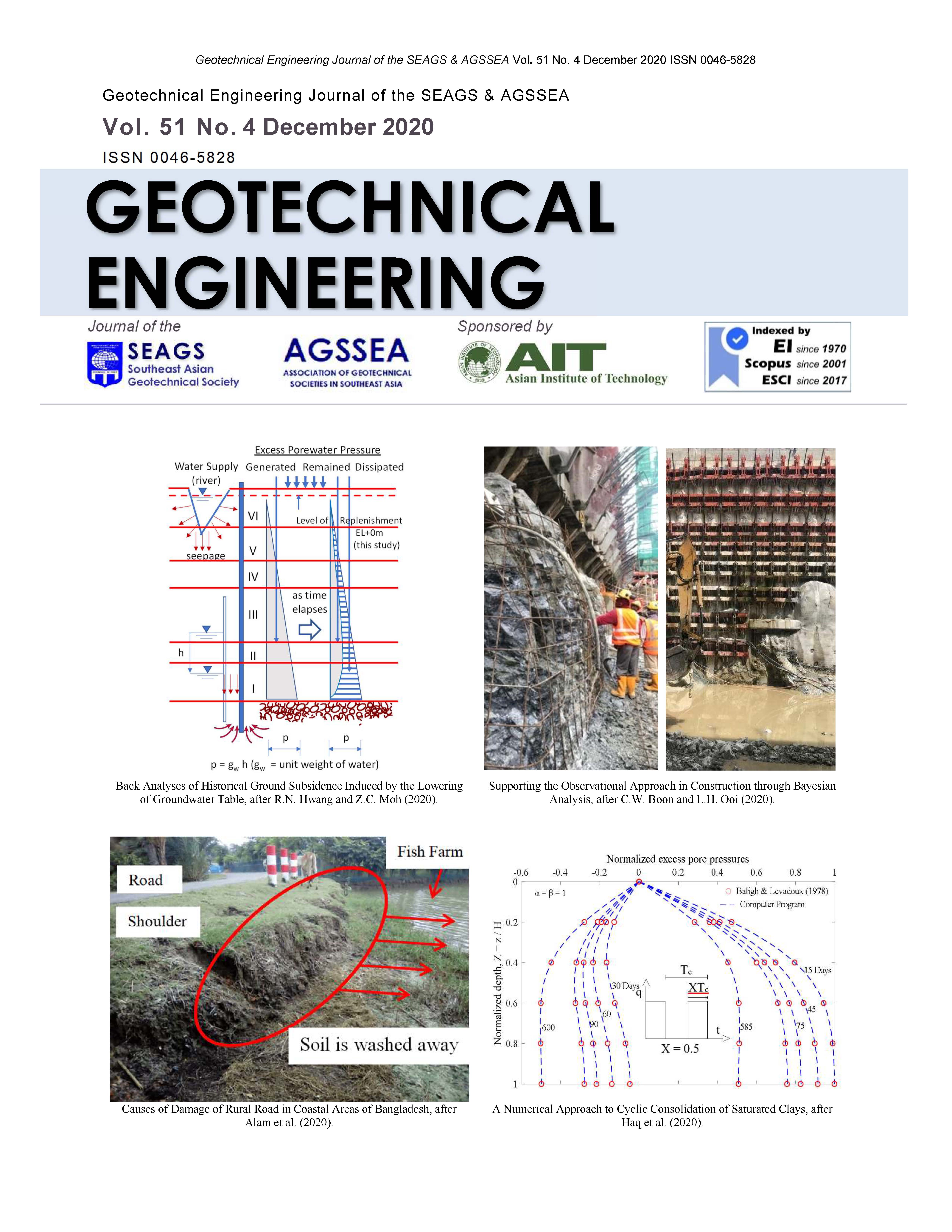Post-liquefaction Settlement Evaluation Method of Non-plastic Silty Sand
Main Article Content
Abstract
Although the soil liquefaction potential has been the focus of considerable research, post-liquefaction subsidence has not yet received equal attention. In addition to this, non-plastic silty sand is observed in areas where severe earthquakes have occurred in Japan, Taiwan, and New Zealand, and thus the soil liquefaction engineering properties of such soil need to be investigated immediately. In the past five years, the authors applied the new sampling techniques to obtain high quality soil samples, and a series of soil tests were performed to determine the dynamic properties and post-liquefaction volumetric strain behaviours of non-plastic silty sand. In this study, the applicability of the current settlement evaluation methods in Taiwan is discussed based on relevant research results first. Then, for the convenience of use, the formulation of analysis process of the current evaluation methods is proposed. Finally, considering the influence of the volumetric strain behaviour of non-plastic silty sand, the modifications to current evaluation methods of the silty sand post-liquefaction settlement were then proposed using case verifications. It is considered that analysis results using the suggested modifications proposed in this study are more consistent than those of the previous methods.
Article Details

This work is licensed under a Creative Commons Attribution-NonCommercial-NoDerivatives 4.0 International License.
Copyright © 2019 Association of Geotechnical Societies in Southeast Asia (AGSSEA) - Southeast Asian Geotechnical Society (SEAGS).


